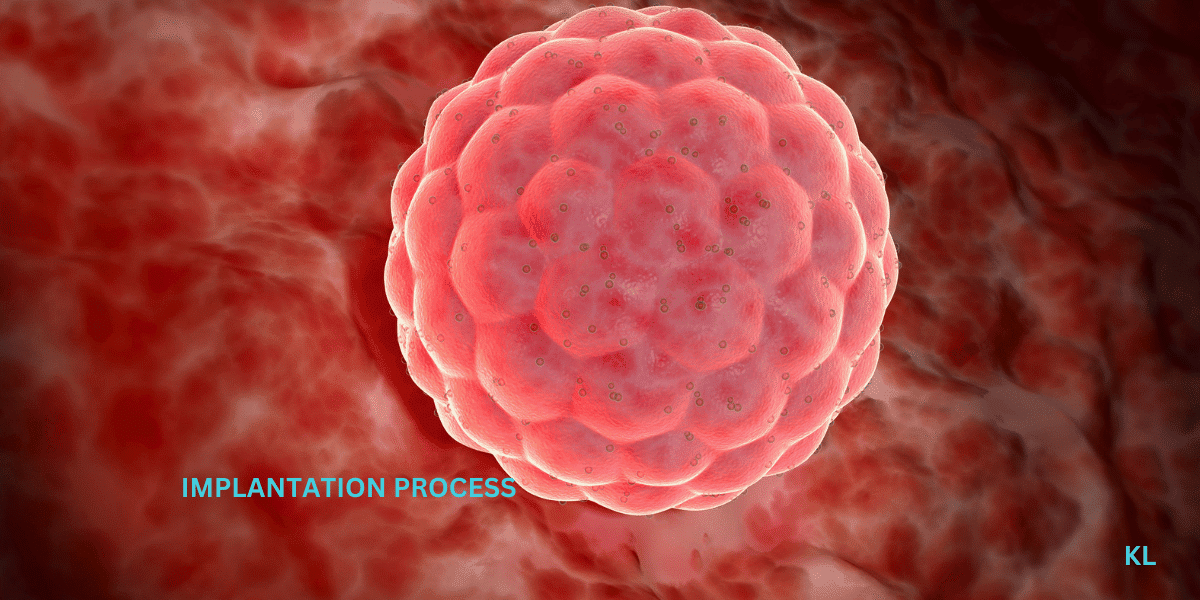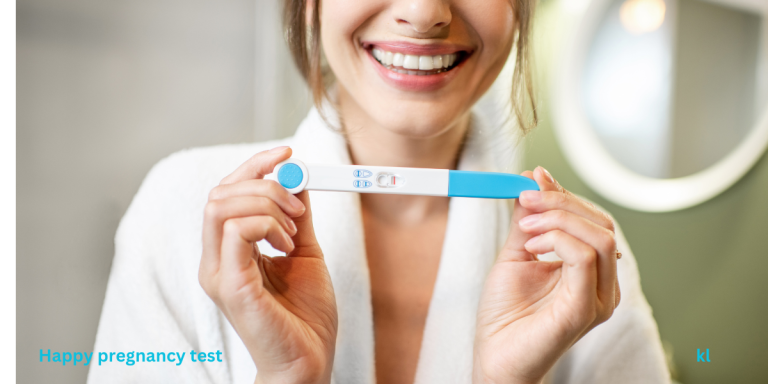Wow! Did you know a baby’s heart starts forming 22 days after conception? You can hear that first tiny heartbeat around 5 to 6 weeks of pregnancy. It’s amazing how early the miracle of life begins, often before you even realize you’re pregnant!
Welcome to our comprehensive guide on fetal development: conception to delivery in 40 weeks. where we’ll take you on an awe-inspiring journey from the moment of conception to the day you finally meet your little one.
Whether you’re expecting, planning to conceive, or simply curious about the wonders of human development, we will walk you through the incredible transformations that occur during those precious 40 weeks. So, grab a cup of tea (decaf if you’re pregnant!), and let’s dive into the fascinating world of fetal growth!
The First Trimester (Weeks 1-13)
I remember when I first found out I was pregnant. My husband and I were over the moon, but I had no clue what was happening inside my body. It’s kinda wild when you think about it – there’s so much going on, and you can’t even see it!
The first trimester is an incredible journey, filled with rapid changes and significant milestones. It’s during these crucial weeks that your baby’s foundational development takes place, and your body begins to adjust to the new life growing inside.
According to the National Library of Medicine, most major birth defects in the body and internal organs happen during the first trimester. That’s why it’s important to follow your doctor’s advice and take all necessary tests seriously during this time.
Weeks 1-2
The first two weeks might seem a bit confusing because, technically, you’re not pregnant yet. During this time, your body is preparing for potential pregnancy. Ovulation occurs around the end of the second week, releasing an egg that can be fertilized.
If conception happens, the fertilized egg, now called a zygote, begins its journey toward the uterus. It’s an exciting time, though you probably won’t notice any changes just yet.
Even though you can’t see it, the groundwork for embryonic development is being laid. This stage is all about preparation, both for your body and for the tiny life that’s about to begin its incredible journey.

Weeks 3-4
By weeks 3 and 4, the fertilized egg has made its way to the uterus and starts the implantation process—embedding itself into the uterine wall. This is when the real magic begins, and you’re officially pregnant. Hurray!
As the embryo develops, it’s a time of rapid cellular division. Human chorionic gonadotropin (hCG) levels begin to rise, the hormone detected by pregnancy tests.
I remember being so confused when the doctor gave us a due date that didn’t match up with our, ahem, “special night”. It turns out, they count from the first day of your last period. Who knew?
During these early weeks, the neural tube also starts to form, which will eventually develop into the brain and spinal cord. It’s an essential part of early embryonic development.
This is also the time to ensure you’re getting enough prenatal vitamins especially folic acid in your diet, as it’s crucial for proper neural tube development and can help prevent major birth defects of the baby’s brain and spine.
You might start to experience early signs of pregnancy, such as slight spotting, mild cramping, or even those early feelings of fatigue. Your body is already hard at work, even if you’re not feeling any major changes just yet
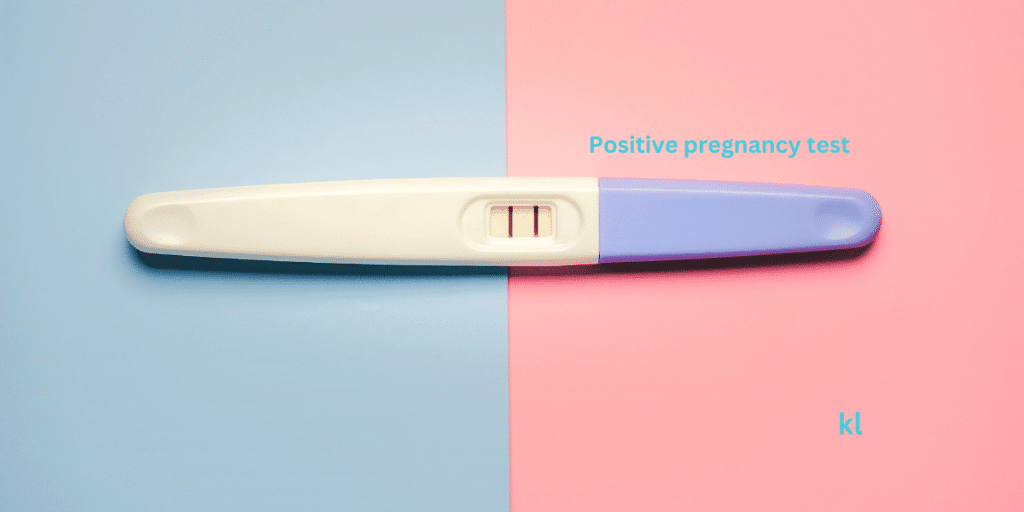
Weeks 5-8
Weeks 5 through 8 are where things kick into high gear. The embryo is growing rapidly, and this period is marked by the beginning of organogenesis—the formation of major organs and systems.
It’s during these weeks that the heart, brain, and spinal cord start to take shape, and by the end of week 5 or early week 6, you may be able to hear the fetal heartbeat.
The neural tube also continues to develop and it closes by the end of week 6, marking a critical step in the baby’s brain and spinal cord formation.
Limb buds also appear, which will eventually develop into arms and legs, and the beginnings of facial features start to form. Organogenesis is in full swing, with the liver, kidneys, and lungs starting to take shape.
These early stages of fetal development: from conception to delivery are crucial for your baby’s development, so maintaining a healthy diet rich in folic acid is vital.
You might start experiencing more pronounced pregnancy symptoms during this time, like nausea and morning sickness, I gotta admit, this period was tough on me.
Morning sickness hit me like a truck (and let me tell you, it ain’t just in the morning). I was exhausted all the time, and my sense of smell became so strong I could practically tell what our neighbors were having for dinner. But knowing all the incredible changes happening inside made it a bit easier to bear
Weeks 9-13
As you move into weeks 9 through 13, your baby transitions from being called an embryo to a fetus. This period is characterized by rapid growth and further development of the organs and systems that began forming earlier.
The fetal heartbeat becomes stronger, and you may even hear it during a prenatal visit. I’ll never forget the first time I heard that rapid little “whoosh whoosh” on the ultrasound It’s a moment that makes everything feel real and is often an emotional experience for expectant parents.
During this phase, the face begins to develop more distinct features, and the limbs continue to grow. By the end of the first trimester, your baby is about the size of a peach, and while it’s still tiny, it’s a fully formed little human. Organogenesis continues, with organs maturing and preparing for the next stages of development.
You might notice some changes in your body, such as a slight baby bump or continued pregnancy symptoms, but rest assured, all these signs mean your body is doing exactly what it should.
It’s an exciting time as you move closer to the second trimester, with the foundations for your baby’s growth and development firmly in place.
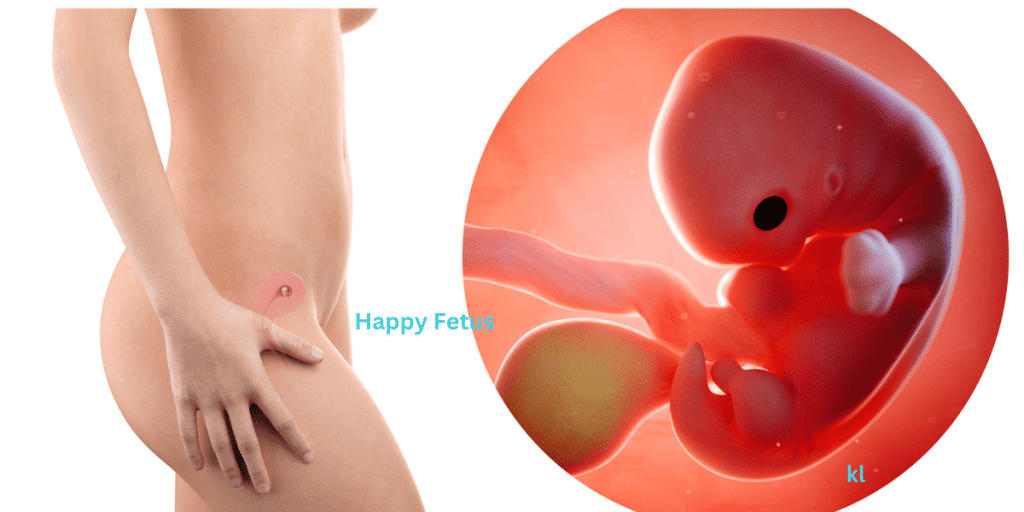
The Second Trimester: (Weeks 14-27)
The second trimester is often referred to as the “golden period” of pregnancy. For many expectant parents, this phase brings a welcome relief from the early pregnancy symptoms and a burst of energy.
For me, I wasn’t hugging the toilet bowl every morning. It’s during these weeks that your baby truly begins to grow and thrive, and some of the most exciting milestones of pregnancy occur.
Weeks 14-18
Development continues at a rapid pace during the second trimester. During weeks 14 to 18, one of the most thrilling moments happens—you may start to feel your baby’s first movements, known as quickening.
These early fetal movements can feel like gentle flutters or bubbles, and they’re a reassuring sign that your baby is growing strong. It’s an incredible moment that brings a new level of connection to the life developing inside you.
Around this time, your baby’s gender can often be determined through an ultrasound. While some parents choose to find out the gender, others prefer to wait for a surprise.
Either way, the ultrasound offers a chance to see your baby’s development up close, measuring the fetal length from crown to rump and checking on the overall progress.
The crown-rump length is a key indicator of how your baby is growing and thriving during these weeks. Inside your womb, your baby is surrounded by amniotic fluid, which plays a critical role in protecting and cushioning them as they move around.
The placenta is fully functioning by this stage, supplying your baby with essential nutrients and oxygen through the umbilical cord and also filtering out waste, and ensuring that your baby’s environment remains optimal for growth This complex system supports your baby’s rapid growth, ensuring they have everything they need to develop healthily.
Weeks 19-22
Weeks 19 to 22 are filled with significant developments as your baby continues to grow. By this stage, fetal movements become more pronounced and frequent.
You may start to notice a pattern in your baby’s activity, and those little kicks and stretches can bring immense joy. It’s a sign that your baby is becoming stronger and more active with each passing day.
One of the major milestones during these weeks is the continued development of the baby’s organs and systems. Your baby’s senses are also beginning to develop, with taste buds forming and the ears becoming more attuned to sounds. Fetal weight gain accelerates, and your baby’s body is starting to fill out, preparing for the final stages of development.
If you haven’t already had your mid-pregnancy ultrasound, this is the time when most parents get a detailed scan to check on the baby’s anatomy.
It’s an opportunity to see how your baby has grown, measuring fetal length and ensuring that all organs are developing as they should. This scan can be both exciting and reassuring as you witness firsthand how your baby is thriving.
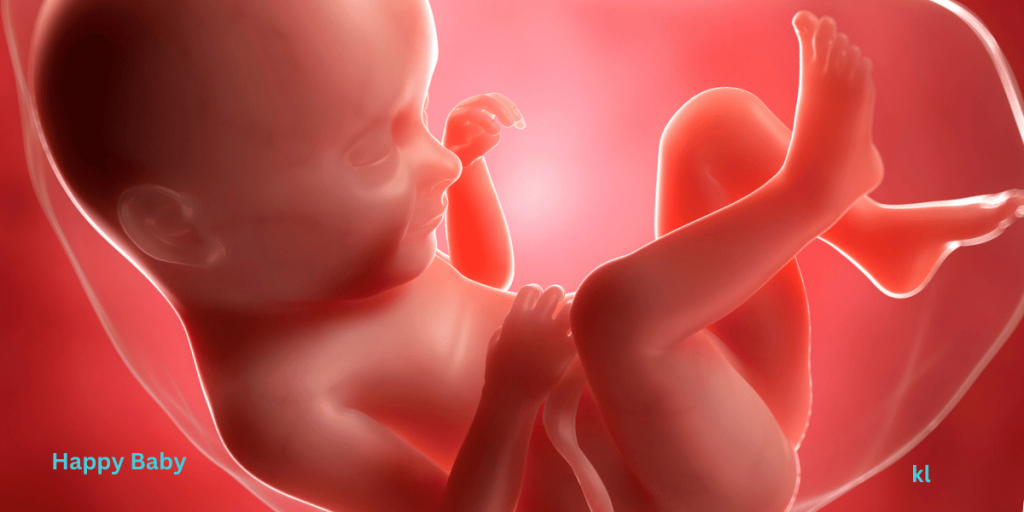
Weeks 23-27
As you approach the end of the second trimester, your baby is rapidly growing and gaining weight. By weeks 23 to 27, the baby’s movements are strong enough for others to feel, making it a special time for partners and family members to bond with the baby.
These kicks, rolls, and stretches are not just a source of excitement but also an indication that your baby is healthy and active.
During these weeks, your baby’s brain continues to develop at a remarkable rate, and the lungs are maturing in preparation for breathing after birth. The amniotic fluid remains crucial, allowing your baby to move freely and helping to regulate temperature.
As your baby grows, the amount of amniotic fluid adjusts to ensure there’s enough space for movement and growth.
Fetal weight gain is particularly significant during this stage, with your baby doubling in size as the weeks progress.
This increase in weight is essential for survival outside the womb, and it’s a sign that your baby is on the right track. You might also notice changes in your body as your belly expands to accommodate your growing baby.
If you’re now heading into your second trimester, my advice would be to enjoy it! Take some time to bond with your baby – talk to them, play music, or do whatever feels right.
And don’t be afraid to involve your partner. My husband may have felt a little left out at times, but singing off-key lullabies to our baby in my belly helped him feel connected.
The Third Trimester:(Weeks 28-40)
The third trimester marks the final stretch of your pregnancy journey, where anticipation builds, and preparations for birth begin.
This period is characterized by rapid fetal growth and significant developmental milestones as your baby gets ready to enter the world. From fetal breathing movements to fetal position shifts, each week brings you closer to meeting your little one.
Weeks 28-31
During weeks 28 to 31, your baby is growing rapidly, with important developments happening at an accelerated pace. One of the most fascinating aspects of this stage is the maturation of your baby’s lungs.
Fetal development: from conception to delivery in 40 weeks truly highlights how crucial this period is for your baby’s future ability to breathe on its own. Fetal lung maturation is crucial for breathing after birth, and you may even notice fetal breathing movements during this time.
These rhythmic movements are a good sign that your baby is practicing how to breathe, even though they’re still getting oxygen through the umbilical cord.
You might also start to feel fetal hiccups, which can be a peculiar but reassuring sensation. These small, repetitive movements are caused by the baby’s diaphragm contracting as they practice breathing. It’s a normal part of development and another indication that your baby is preparing for life outside the womb.
Around this time, your baby’s skin begins to thicken and is coated in vernix caseosa, a white, waxy substance that protects the skin from the amniotic fluid.
Lanugo, the fine hair that covers your baby’s body, begins to disappear, although some babies are born with traces of it. These protective layers help regulate your baby’s body temperature and safeguard their delicate skin as they continue to grow.
In terms of fetal position, your baby is likely starting to settle into a head-down position, known as the cephalic position, which is the optimal fetal presentation for birth. While your baby still has some room to move around, they will gradually begin to assume this position more consistently as the week progresses. It’s also during these weeks that most moms-to-be begin writing their ultimate birth plans.
Weeks 32-36
As you enter weeks 32 to 36, your baby is rapidly approaching full-term pregnancy. This period is marked by continued growth and the fine-tuning of vital organs and systems.
Fetal brain development is particularly active during these weeks, with the brain growing in size and complexity. The neural connections being formed will be crucial for your baby’s sensory experiences and cognitive functions after birth.
Another critical development during this stage is fetal kidney function and fetal liver development. These organs are becoming more mature and will soon be fully capable of filtering waste and processing nutrients on their own.
The fetal immune system is also strengthening, aided by antibodies passed from you to your baby through the placenta, helping to prepare your baby to fight off infections after birth.
Fetal circulation undergoes adjustments as well, with the heart continuing to pump blood efficiently through the body.
Your baby’s lungs are now well-developed, and their breathing movements become more rhythmic. While fetal hiccups may still occur, they’re a sign that your baby’s diaphragm is getting stronger.
As your baby grows, it may start to move less frequently, simply because there’s less space in the womb. However, you should still feel regular movements and kicks, as this indicates that your baby is healthy and active.
It’s also during this time that your healthcare provider may begin monitoring your baby’s fetal position more closely, ensuring that they’re in the optimal position for birth.

Weeks 37-40
Weeks 37 to 40 mark the final weeks of your pregnancy, where every day brings you closer to meeting your baby.
By now, your baby is considered full-term, and all of their organs and systems are fully developed. At this point, I was more than ready to evict our little tenant. Fetal lung maturation is complete, and your baby is ready to breathe independently at birth.
During this time, your baby may begin to descend lower into your pelvis, a process known as “lightening.” This shift in a fetal position can alleviate some of the pressure on your lungs and stomach, making it a bit easier to breathe and eat, although you might feel an increased pressure in your lower abdomen.
As the baby continues to grow, it will shed the remaining lanugo, and the vernix caseosa will gradually diminish, although some of it may still be present at birth.
Your baby’s movements may feel different now—less like kicks and more like rolls and stretches—as they get into their final fetal presentation. The head-down position is ideal, but your healthcare provider will keep an eye on this to ensure that your baby is in the best possible position for delivery.
It’s also during these final weeks that your baby’s body prepares to release meconium, their first bowel movement, which is made up of swallowed amniotic fluid, lanugo, and other materials.
While this typically occurs after birth, sometimes babies pass meconium before birth, which may require monitoring by your healthcare team.
As you approach your due date, it’s natural to feel a mix of excitement, nerves, and anticipation. I would waddle around the house, trying all the natural labor induction methods to induce labor, we tried it!
Every pregnancy is unique, and while these milestones offer a general guide, your experience may vary. But hey Despite the discomfort, the worries, and the seemingly endless wait, you will finally hold your little baby in our arms, and it will be worth it. Every cramp, every sleepless night, every bizarre craving – it all led to this perfect little human.
Key Milestones in Fetal Development
First Heartbeat
One of the earliest and most awe-inspiring milestones in fetal development is the detection of the first heartbeat.
This typically occurs around the 6th week of pregnancy, during the embryonic stage. Hearing your baby’s heartbeat for the first time is an emotional experience for many parents, marking the beginning of a new life.
The heart, although still tiny, is already hard at work, pumping blood and setting the foundation for the developing circulatory system. This early fetal circulation is crucial as it ensures that oxygen and nutrients are delivered throughout the growing embryo
Development of Major Organs
By the end of the 8th week, fetal development: from conception to delivery in 40 weeks reaches an incredible milestone. A process known as organogenesis is well underway. The heart, brain, kidneys, liver, and other vital organs begin to take shape.
Fetal brain development is particularly significant during this time, laying the groundwork for future cognitive abilities and sensory experiences.
Similarly, the fetal kidney function and fetal liver development are crucial, as these organs will play vital roles in filtering waste and processing nutrients once the baby is born
First Movements Felt by the Mother
One of the most exciting moments for any expectant mother is feeling the first fetal movements, often referred to as “quickening.”
This typically happens during the second trimester, around weeks 18 to 20. These initial flutters or kicks are a clear sign that your baby is growing and becoming more active.
These movements are not only a physical indication of fetal growth stages but also a profound emotional connection between mother and baby.
As the pregnancy progresses, these movements will become stronger and more frequent, providing ongoing reassurance of your baby’s health and development.
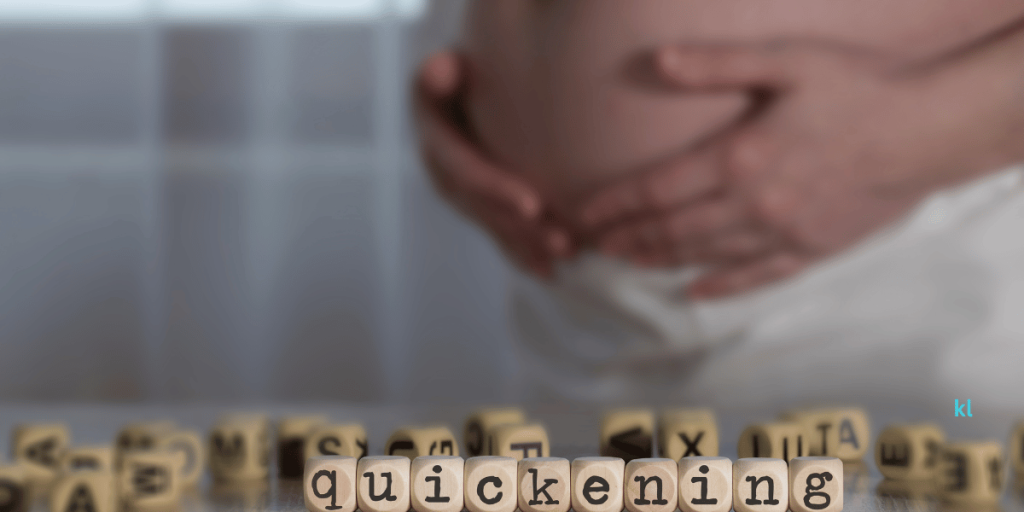
Opening of Eyes and Development of Senses
As you move into the third trimester, your baby’s senses are rapidly developing. Around weeks 26 to 28, your baby’s eyes will start to open, allowing them to perceive light and shadow.
This is a significant milestone in third-trimester development as the visual system becomes more refined.
In addition to sight, other senses such as hearing, taste, and touch are also maturing.
By this stage, your baby can respond to external stimuli, such as sounds and light, indicating that their brain and nervous system are developing well
Factors Influencing Fetal Development
Fetal development is a complex and delicate process, influenced by factors that can affect how a baby grows and thrives in the womb.
Understanding these factors can help expectant parents make informed decisions to support their baby’s health. From maternal nutrition to environmental influences, let’s dive into the key elements that shape fetal development.
Maternal Nutrition and Lifestyle Choices
I never knew food could be such a hot topic until I got pregnant. Suddenly, every meal was like a strategic military operation. “Is this fish high in mercury?
How many milligrams of iron are in this spinach? Is it okay to eat sushi if we cook it first?” I swear, I turned into a human nutrition label reader overnight.
What a mother eats directly impacts her baby’s growth and well-being. A balanced diet rich in essential nutrients, such as folic acid, iron, calcium, and omega-3 fatty acids, is crucial for proper fetal development. These nutrients play vital roles in brain development, bone formation, and overall growth.
Prenatal vitamins are often recommended to ensure that the mother gets all the necessary nutrients, especially during the early stages of pregnancy when the neural tube is developing into the brain and spinal cord.
These vitamins typically include folic acid, which is essential for preventing neural tube defects, as well as other important vitamins and minerals that support both maternal health and fetal growth.
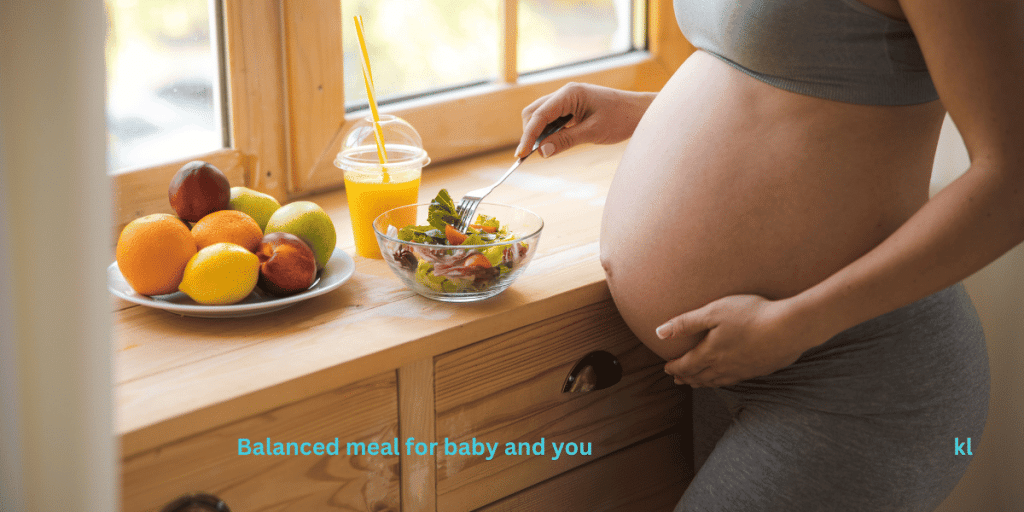
Lifestyle choices, such as avoiding smoking, alcohol, and excessive caffeine, are equally important. I gave up my beloved morning coffee. No more wine with dinner, no more deli meats (goodbye, favorite sandwich shop).
My healthcare provider told me these substances can interfere with pregnancy hormones and negatively impact fetal development, leading to complications such as low birth weight, premature birth, or even developmental delays.
Regular physical activity, as advised by a healthcare provider, can also support healthy fetal development by promoting good circulation and reducing stress.

Genetic Factors
Genetic factors are another crucial element in fetal development. The genetic blueprint inherited from both parents determines everything from a baby’s physical appearance to their risk of certain hereditary conditions.
Genetic factors can influence how a baby develops in the womb, including the formation of major organs, the development of the brain, and even the timing of key milestones like the first heartbeat or fetal movements.
While many genetic traits are inherited without issues, some genetic disorders can impact fetal development.
For instance, conditions like Down syndrome or cystic fibrosis are caused by genetic abnormalities and can lead to developmental challenges. Prenatal screenings and genetic testing can help identify these risks early on, allowing parents to prepare and make informed decisions about their baby’s care
Environmental Influences
The environment in which a mother lives and works can significantly affect fetal development. My husband and I were like a couple of detectives, sniffing out potential hazards. Is that paint VOC-free? Should we get rid of our non-stick pans? Do we need to filter our tap water? wow
Exposure to harmful substances like pollution, pesticides, and chemicals can have adverse effects on a developing fetus.
These environmental toxins can interfere with pregnancy hormones and disrupt the delicate process of organogenesis, potentially leading to birth defects or other health issues. Even stress, a common environmental factor, can influence fetal development.
High levels of stress can trigger the release of stress hormones like cortisol, which may impact fetal brain development and lead to long-term effects on a child’s cognitive and emotional health.
Finding ways to manage stress, such as through relaxation techniques, regular exercise, or counseling, can be beneficial for both mother and baby.

Prenatal Care and Medical Interventions
Regular prenatal care is essential for monitoring fetal development and ensuring a healthy pregnancy. Our ob-gyn became like a member of the family. We saw her more often than some of our actual relatives! Each appointment was a mix of excitement and anxiety.
From the first trimester to delivery, prenatal visits allow healthcare providers to track the baby’s growth, detect any potential issues early on, and provide guidance on maternal nutrition, prenatal vitamins, and lifestyle choices.
Medical interventions, when necessary, can also play a critical role in supporting fetal development. For instance, if a mother is at risk for preterm labor, medications may be prescribed to delay delivery and give the baby more time to develop in the womb.
Similarly, conditions like gestational diabetes or preeclampsia require careful management to prevent complications that could affect both mother and baby.
Overall, the combination of good prenatal care, healthy lifestyle choices, and a supportive environment can significantly enhance the chances of a healthy pregnancy and optimal fetal development.
By understanding and addressing these factors, parents can create the best possible conditions for their baby to thrive, from conception through birth
Monitoring Fetal Growth and Health
Monitoring fetal growth and health is one of the most crucial aspects of prenatal care. Regular check-ups, screenings, and various tests help ensure that the baby is developing as expected and that any potential issues are identified early.
These procedures, from routine ultrasound scans to advanced genetic testing, provide essential information about the baby’s health and help guide the course of care throughout pregnancy.
When I was pregnant with my first baby Elyana, I spent more time in the doctor’s office than I did with my hair stylist because I used to go to the salon every two weeks. But hey, better safe than sorry, right? Let’s start with prenatal care
Prenatal Check-Ups and Screenings
Fetal development: from conception to delivery in 40 weeks is closely monitored through prenatal care begins early in pregnancy and involves a series of regular check-ups that track the mother’s health and the baby’s development.
These visits typically include measuring the mother’s weight, and blood pressure, and checking for any signs of complications.
As the pregnancy progresses, healthcare providers will also monitor the baby’s heartbeat, measure the size of the uterus, and estimate gestational age to ensure the baby is growing at the right pace.
One of the key elements of prenatal care is genetic screening, which helps identify the risk of certain genetic conditions or chromosomal abnormalities.
Tests like the Alpha-fetoprotein (AFP) screening, which measures the level of AFP in the mother’s blood, can indicate the likelihood of conditions like spina bifida or Down syndrome. Depending on the results, further diagnostic tests like amniocentesis or chorionic villus sampling (CVS) may be recommended to confirm the findings.
Ultrasound Scans and Their Importance
Fetal ultrasound is one of the most common and valuable tools for monitoring fetal growth and health. Ultrasound scans use sound waves to create images of the baby inside the womb, allowing healthcare providers to observe the baby’s development in real time.
These scans are typically performed at various stages of pregnancy to check for fetal abnormalities, determine the baby’s position, and monitor growth.
During the first trimester, an ultrasound can confirm the due date calculation by measuring the crown-rump length of the fetus. This is also when healthcare providers can check for multiple pregnancies, assess fetal viability, and detect the presence of a heartbeat.
As pregnancy progresses, ultrasounds are used to monitor the development of major organs, measure fetal length, and estimate fetal weight to ensure the baby is growing as expected.
Ultrasound scans also play a crucial role in identifying fetal abnormalities, such as congenital heart defects or limb deformities.
Early detection through ultrasound allows for better planning and management of the pregnancy, including deciding on the best time and method of delivery if complications are anticipated.

Non-Invasive Prenatal Testing (NIPT)
Non-invasive prenatal testing (NIPT) is a relatively new but highly accurate method for assessing the risk of certain genetic disorders in a developing baby.
NIPT analyzes small fragments of fetal DNA circulating in the mother’s blood to detect conditions like Down syndrome, trisomy 18, and trisomy 13. Because it only requires a simple blood draw from the mother, NIPT poses no risk to the baby, making it a safer alternative to more invasive tests like amniocentesis.
NIPT is typically offered to women who are at higher risk for chromosomal abnormalities, such as those who are over 35 years old or have a family history of genetic disorders.
However, it can be requested by any expectant mother seeking additional reassurance about their baby’s health. While NIPT is not diagnostic, meaning it can’t confirm a disorder, it provides valuable information that can guide further testing and decision-making during pregnancy.
Monitoring Fetal Movements in Late Pregnancy
As pregnancy progresses into the third trimester, monitoring fetal movements becomes an important part of assessing fetal health. These movements, often referred to as “quickening,” usually start around weeks 18-22 and become more pronounced as the baby grows.
By the third trimester, healthcare providers often advise mothers to track “kick counts,” or the number of times the baby moves within a certain period, to ensure the baby is active and healthy.
Decreased fetal movements can be a sign of distress and should be reported to a healthcare provider immediately. In such cases, additional monitoring, such as a non-stress test or a biophysical profile, may be conducted to assess the baby’s well-being and determine if further intervention is necessary.
Overall, monitoring fetal growth and health is a dynamic process that involves a combination of prenatal care, ultrasound scans, genetic screening, and vigilant observation of fetal movements.
By staying engaged in this process, expectant parents can feel more confident that their baby is developing well and that any potential issues are addressed promptly, leading to a healthier pregnancy and a positive outcome at birth.
Preparing for Delivery: What to Expect
As the end of pregnancy approaches, excitement, and anxiety often build up in equal measure. Preparing for delivery involves understanding the signs of approaching labor, familiarizing yourself with the stages of labor and delivery, and being aware of possible complications and interventions.
We took classes, watched videos, read books – you name it, we did it. My husband even practiced his “coaching breathing” in the shower. All the knowledge I got made me feel more confident and ready for the big day

Signs of Approaching Labor
Recognizing the signs of approaching labor can help you know when it’s time to head to the hospital or call your midwife. One of the earliest signs is the onset of Braxton Hicks contractions, often referred to as “practice contractions.”
These are usually irregular, mild contractions that can start as early as the second trimester but become more noticeable in the third trimester. Unlike true labor contractions, Braxton Hicks contractions do not increase in intensity or frequency and often subside with rest or hydration.
As you get closer to your due date, other labor signs to watch for include the “bloody show,” which is the passage of the mucus plug that seals the cervix during pregnancy.
This can happen a few days or even weeks before labor begins. Another sign is the breaking of your water, also known as the rupture of membranes, which can occur as a sudden gush or a slow trickle of amniotic fluid. Once your water breaks, labor typically follows soon after.
Premature birth, defined as delivery before 37 weeks of gestation, can also occur, and recognizing early labor signs is crucial. If you experience regular contractions before 37 weeks, it’s important to seek medical attention immediately to potentially delay labor and ensure the best outcome for your baby
The Stages of Labor and Delivery
Labor and delivery are divided into three main stages, each with its challenges and milestones. Understanding these stages can help you mentally and physically prepare for the journey ahead.
The first stage of labor is the longest and involves the dilation and effacement of the cervix. This stage is further divided into three phases: early labor, active labor, and transition.
Early labor is when contractions begin to establish a regular pattern, slowly softening and opening the cervix. During this phase, contractions are usually manageable, and you may still be at home.
Active labor is more intense, with stronger, more frequent contractions that cause the cervix to dilate more rapidly.
The transition phase is the most intense part of the first stage, with contractions coming close together and the cervix fully dilating to 10 centimeters.
The second stage of labor begins when the cervix is fully dilated and ends with the birth of the baby. This is when you will push during contractions to help move the baby down the birth canal.
This stage can last anywhere from a few minutes to several hours, depending on various factors, including the baby’s position and whether this is your first delivery.
The third stage of labor occurs after the baby is born and involves the delivery of the placenta. This stage is typically much shorter, lasting around 10 to 30 minutes. Healthcare providers will check that the placenta is delivered intact to prevent complications such as postpartum hemorrhage.

Possible Complications and Interventions
While most deliveries proceed without major issues, it’s essential to be aware of possible complications and the interventions that may be necessary.
This is the stuff that kept me up at night when I was pregnant with my first child but to the glory of God I delivered safely and that will be your story too.
Some common complications include fetal distress, where the baby shows signs of stress such as an abnormal heart rate, and prolonged labor, which can lead to exhaustion for the mother and increased risk for the baby.
Interventions such as the use of labor-inducing medications, forceps, or a vacuum extractor may be needed if labor stalls or if the baby needs assistance to be delivered safely.
In some cases, a cesarean section (C-section) may be necessary, particularly if the baby is in a breech position or if there are signs of fetal distress that require immediate delivery.
It’s also important to be aware of the signs of premature labor and the steps that can be taken to manage it. Premature birth can sometimes be delayed with medications that stop contractions, giving the baby more time to develop in the womb.
In cases where premature birth is inevitable, interventions to support the baby’s lung development, such as administering corticosteroids, can improve outcomes.
Immediate Postpartum Care for Mother and Baby
Once the baby is born, immediate postpartum care focuses on ensuring the health and well-being of both the mother and the baby. For the mother, this includes monitoring for any signs of postpartum hemorrhage, managing pain, and supporting the uterus to contract back to its pre-pregnancy size.
Skin-to-skin contact between mother and baby is encouraged right after birth, as it promotes bonding, regulates the baby’s temperature, and supports breastfeeding initiation.
For the baby, immediate care includes clearing the airway if needed, drying and warming to prevent hypothermia, and conducting the Apgar test, which assesses the baby’s heart rate, breathing, muscle tone, reflexes, and skin color.
The baby will also receive a Vitamin K injection to prevent bleeding disorders and antibiotic eye ointment to prevent infection.
Childbirth preparation, including understanding these stages and potential interventions, can make a significant difference in how you experience labor and delivery.
While it’s impossible to predict exactly how your labor will unfold, being informed and having a birth plan in place can help you feel more empowered and ready for the arrival of your little one.
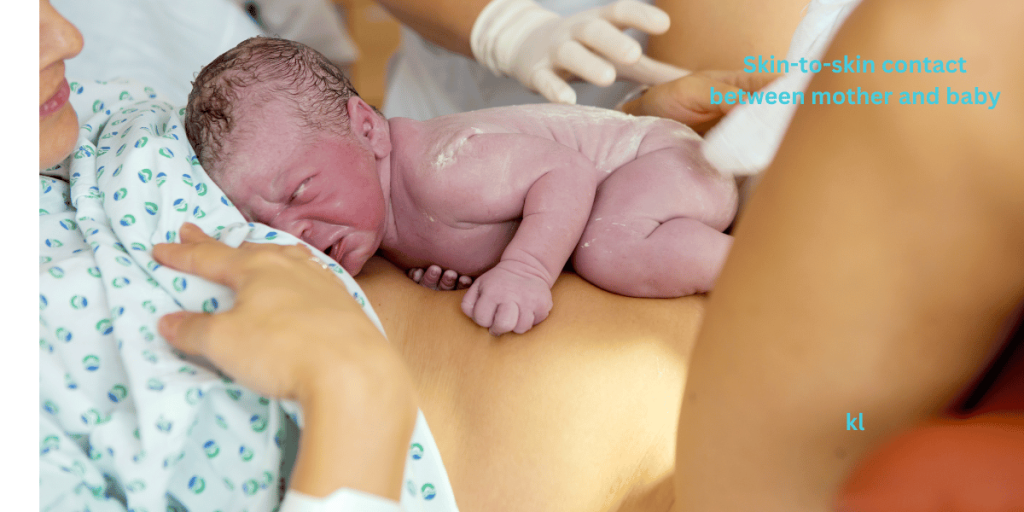
Looking back, I realize that no matter how much you prepare, you can never be fully ready for what labor and delivery will bring. It’s like trying to prepare for a hurricane – you can board up the windows, but you’re still gonna get wet!
If you’re in the preparation stage right now, my advice would be this: educate yourself, but don’t stress if things don’t go according to plan.
Mother Nature has a way of laughing at our carefully crafted birth plans. Stay flexible, trust God and your medical team, and remember – women have been doing this for thousands of years. You’ve got this!

